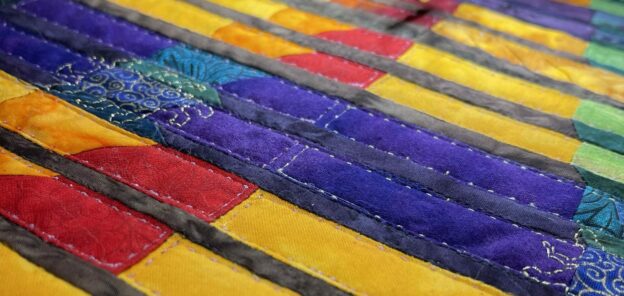Number four! The home straight. While I was working on the first three Peer Gynt quilts, I was contemplating and tweaking the quilt design for the fourth movement of the Peer Gynt Suite 1, In the Hall of the Mountain King. This movement is one of the most well-known pieces of classical music and easily evokes a mental image. This is mine.
(more…)Tag: quilting
-
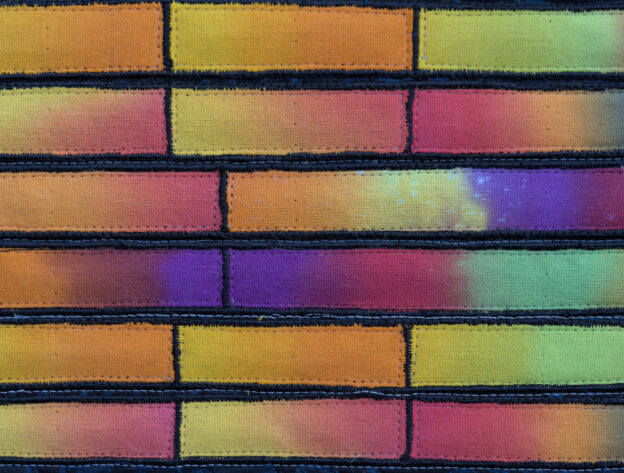
Peer Gynt quilt, Part 3
Of the four movements in Edvard Grieg’s Peer Gynt suite 1, three have titles which immediately put an image in the mind. The second movement, Åse’s Death, was the most problematic to express as a quilt.
(more…) -
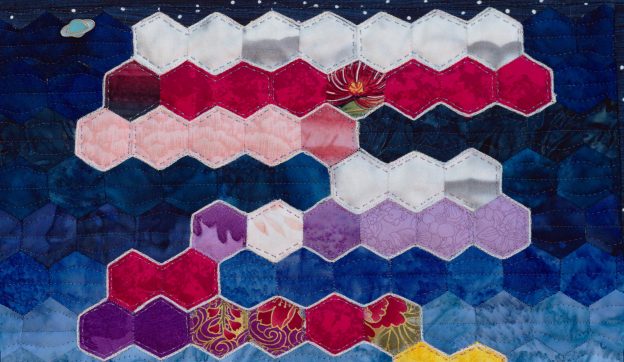
Peer Gynt quilt, Part 2
Hot on the heels of my quilted interpretation of Edvard Grieg’s classical composition Anitra’s Dance from the Peer Gynt suite, chronicled in Part 1, I wanted to get stuck into the next quilt in the series. My next quilt would be the first movement, Morning Mood, a piece of music known even to people with only a passing acquaintance of classical music. Morning Mood epitomizes Romantic era music, painting a picture in the mind. I intended for my interpretation to do the same.
(more…) -
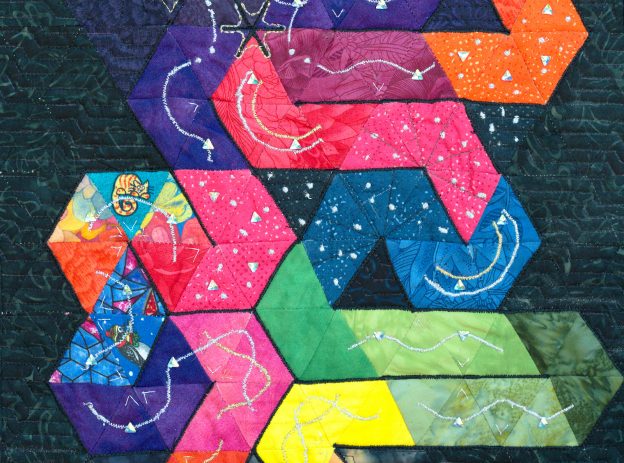
Peer Gynt quilt, Part 1
There we were: me, my partner, and my mother, having breakfast in the Savoy Hotel in London before our river cruise, and the conversation drifted to Maurice Ravel‘s Boléro, as it so often does.
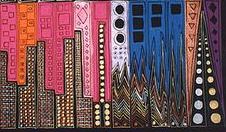
Anne Adams’s Unraveling Boléro (1994, detail), showing the last few bars and the rousing final crescendo. I recalled a painting by Canadian artist Anne Adams, Unraveling Boléro, inspired by this evocative orchestral piece. This painting represents the music as a series of rectangles, one per bar. Each rectangle is coloured according to the dominant note in the bar. The height of the rectangle corresponds to the volume of the music. Other embellishments correspond to the rhythm and the instrumentation. It’s rightly regarded as Adams’s masterwork.
The three of us at breakfast that day all do quilting, and Unraveling Boléro looked a lot like something that could be quilted. But copying someone’s art didn’t excite me. Mum suggested another well-known piece of classical music, something out of copyright. How about Edvard Grieg‘s In the Hall of the Mountain King, from the Peer Gynt suite?
(more…)
